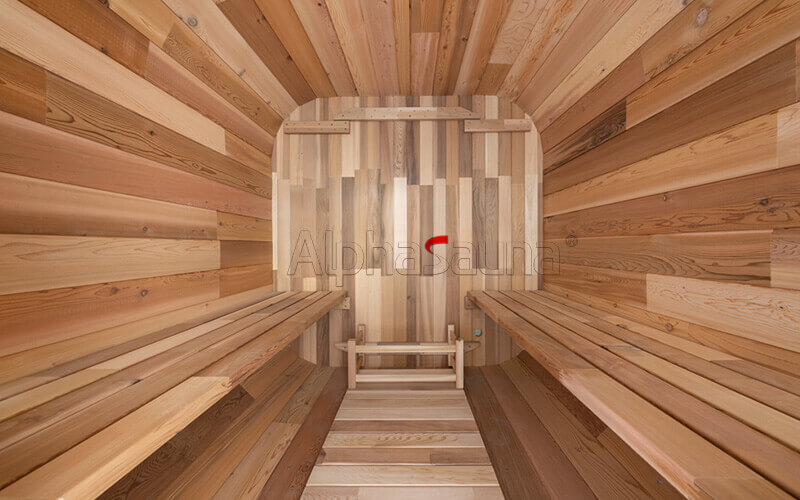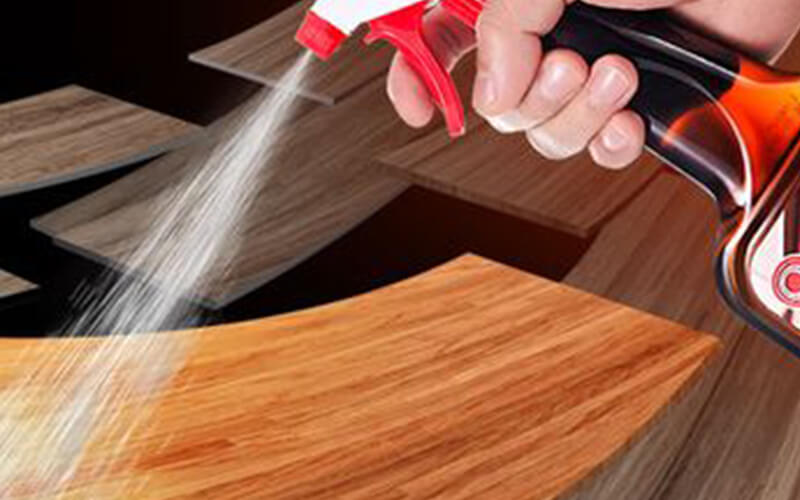Sauna culture originated in ancient times and has a history spanning several thousand years. The earliest saunas
originated in Finland as a traditional form of heat therapy. Initially, Finnish saunas were small, enclosed rooms
where heat and humidity were generated by burning wood and heating stones, creating the high-temperature,
high-humidity environment characteristic of saunas. Modern saunas operate on similar principles to ancient ones,
but they are housed in specially designed sauna rooms. The environment, functionality, and accessories of these
rooms have been continually improved, enhancing the overall sauna experience.
Construction Materials Of Modern Saunas
Modern saunas are typically constructed using natural and durable materials, with wood being the primary choice for the sauna's
framework and internal structures. Wood's unique properties contribute to a comfortable sauna experience and ensure the sauna's stability.
Common sauna woods include cedar, pine, and hemlock, each with its own attributes. Cedar possesses strong heat
resistance, moisture resistance, and resistance to corrosion, along with natural antibacterial and antifungal properties.
Cedar also offers excellent stability, resisting deformation and cracking. When heated, cedar emits a distinctive aroma,
which promotes relaxation, stress relief, and mood enhancement. Pine boasts good heat resistance, remaining resistant
to deformation and cracking in the high-temperature environment of a sauna. Its relatively hard wood provides durability,
ensuring the sauna's sturdiness. Hemlock, likewise, offers sturdy wood with uniform color and clear, attractive grain, along with good heat resistance.
Wood is one of the best construction materials for building saunas. While different woods possess varying characteristics,
wood itself inherently offers excellent heat resistance, capable of withstanding the sauna environment. However, prolonged
exposure to high temperatures and humidity can lead to issues such as deformation, cracking, and mold growth,
necessitating regular maintenance of the wood.

How To Care For Sauna Wood?
1. Daily Cleaning:
After each use of the sauna, promptly clean the surface of the wood. Wipe away sweat, grease, and dirt from the wood surface to prevent bacteria from breeding and damaging the wood. You can gently wipe with warm water and soap, then rinse thoroughly with clean water, ensuring the wood is dry.
2. Ensure Ventilation:
After using the sauna, maintain good ventilation to ensure that moisture inside the sauna room can be completely expelled, preventing moisture from lingering on the wood and causing mold or rot.
3. Deep Cleaning:
In addition to regular daily cleaning, regular deep cleaning is also necessary. You can use specialized sauna cleaners to thoroughly clean the wood surface, removing dirt and bacteria from the wood surface, as well as deeper-seated grime.
4. Regular Sanding:
Over time, wood may become rough or scratched. Regular sanding of the wood can ensure a smooth wood surface.
5. Proper Maintenance:
You can use specialized sauna wood protectants, such as wood wax oil, to apply to the wood surface for maintenance. This increases the wood's waterproof and dirt-resistant capabilities, prolonging the wood's lifespan.
6. Regular Inspection Of Wood Condition:
Regularly check the wood for deformations, cracks, mold, etc. If any issues are found, they should be addressed immediately to prevent them from worsening and affecting the sauna's normal use.
7. Protect Wood Surfaces:
You can lay towels or mats on wooden benches to prevent direct contact between the wood and the sauna's high temperature and humidity.Regular cleaning and maintenance of the wood can extend the lifespan of sauna wood, ensuring the sauna can be used normally and providing a comfortable and safe sauna environment.

Can Mold On A Wood Sauna Be Harmful?
Mold on wooden saunas not only poses a threat to the structure of the sauna but also to human health. Here are the
potential harms caused by mold on wooden saunas:
In saunas with mold, spores may enter the respiratory tract through breathing, leading to various respiratory discomforts such as coughing, asthma, rhinitis, and other symptoms. Mold can also trigger allergic reactions, such as itching and swelling of the skin, especially in individuals prone to allergies. Some molds may cause severe health issues, resulting in fungal infections, particularly in individuals with weakened immune systems who are more susceptible to mold infections.
2. Damage To Wood:
Mold can cause wood to rot and decay, thereby compromising its structural integrity. Mold also damages the appearance of wood, forming black or white-green spots on the wood surface, thereby affecting the sauna's aesthetics.
Overall, mold poses certain risks to both human health and saunas. Therefore, measures need to be taken to prevent its occurrence.

Measures To Reduce Mold Growth In Wooden Saunas
1. Prevention Measures:
After using the sauna, ensure proper ventilation to thoroughly air out and dry the sauna room, preventing moisture from lingering on the wood and causing mold growth. You can open doors and windows, activate ventilation systems, or use dehumidifiers and fans to expedite moisture evaporation. Regular cleaning of the wood surface with cleansers can also effectively prevent mold growth by preventing the accumulation of dirt and sweat. Additionally, applying specialized mold-resistant agents and wood wax oil to the wood surface can effectively prevent mold growth.
2. Dealing With Existing Mold:
Upon discovering mold growth in the sauna, use a brush to sweep away the surface mold, then lightly sand the affected wood surface with fine sandpaper. After sanding and cleaning, apply some mold-preventing care solution on the surface. If the wood is severely corroded and damaged, it is best to replace it to prevent structural damage tothe sauna, ensuring the safety of sauna use.
3. Maintain Proper Ventilation:
Install ventilation systems in the sauna room to quickly expel moisture and heat, ensuring sufficient dryness inside the sauna. Pay attention to the humidity levels inside the sauna room; if humidity is too high, expel the moisture from the sauna room to prevent it from becoming overly humid and hot, thereby promoting mold growth.By implementing these measures, you can prevent and address mold growth, ensuring the durability of sauna wood and the health and safety of sauna users.

Best Wood For Saunas
There are many types of wood that can be used to construct sauna rooms, such as cedar, hemlock, pine, eucalyptus, poplar, and more, each with its unique properties. Some woods may offer better aesthetics, while others may excel in functionality. Additionally, there are woods that combine both aesthetic appeal and functional advantages. Users can choose the wood that best suits their preferences and needs to create a relaxing and comfortable sauna environment.
Alphasaunas master the essence of wooden sauna construction, using high-quality wood to build sturdy and stable sauna rooms, providingusers with comfortable and durable sauna environ ments. Our sauna rooms come in various types, including those constructed with different types of wood, as well as saunas of different shapes and functionalities, offering users a variety of sauna experiences. We guarantee the quality of our sauna rooms, with building materials meticulously selected to ensure the quality of the wood, creating a robust and durable sauna room.






